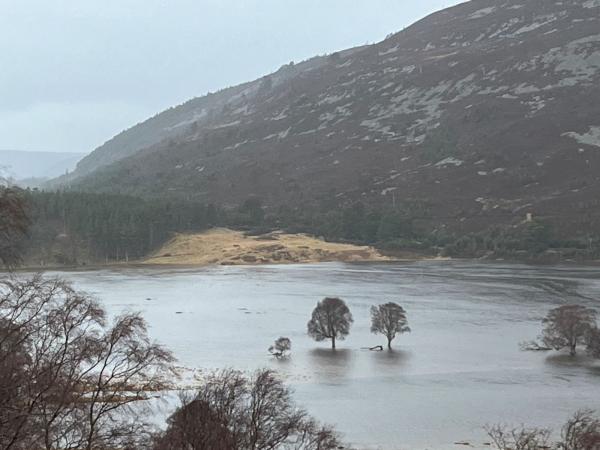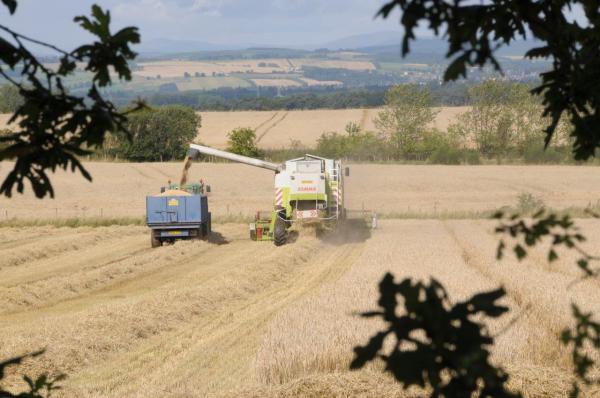How is Scotland’s climate changing?
Dr Mike Rivington and Dr Mohamed Jabloun
A changing climate – past trends and future projections and what they could mean for Scotland.
Scotland is well known for its weather. We’re used to rain and snow as well as dry spells. But these weather patterns are changing. What could this mean for how we live?
We undertook research, on behalf of the Scottish Government, looking at how the climate has changed since 1960 and how it’s expected to change in coming decades out to 2080.
Read more: Scotland’s climate changing faster than predicted
Using daily data from the Met Office at a spatial resolution of 1sq km, we looked at what’s already happened and how it compared with what was projected to happen by climate models used to produce the UKCP18 climate projections, first released in 2018*. The UKCP18 projections are the main reference point in the UK for estimates of future climate change.
We looked at 12 projections for how the climate is modelled to change in Scotland to understand what we might expect in future, including some of the climate extremes we could experience.
As our weather can be variable, we looked at longer term changes to identify trends in the climate. Specifically, we compared the three decades from 1960 to 1989 with the three decades 1990 to 2019. This enabled us to map the changes for every 1km square in Scotland.


Our weather – when and where we get rain or hot periods – can have a big impact on what is sometimes called Natural Capital and the assets that make it up, such as soils, water, plants and animals. It is the land and ecosystem resources we use to survive that are provided by Nature.
The projections we looked at suggest multiple species and habitats will be under changing and increased stress from the climatic conditions they have existed in previously, particularly higher temperatures and lack of water. Climate change will affect how ecosystems work and alter the benefits they bring.
There could be increased competition for water and nutrients among wildlife species. This could favour those with broader tolerance ranges, such as invasive species, which could then change habitats and ecological processes and threaten native species.
Changes in seasonal weather patterns could result in mismatches in the growth and development of species that rely on one another. This could be pollinators (like bees) that rely on certain plant species at certain times. Different species have varying levels of adaptability, some of which may be able to cope with the new climate, whilst other will not.
Climate change impacts on Scotland’s Natural Capital will also alter the potential for mitigation by Nature. Scotland’s Natural Capital, particularly habitats like forests and crops can capture carbon dioxide from the atmosphere and store it as wood or straw. Habitats such as wetlands and peatlands, when healthy, can store carbon previously captured over thousands of years. Altered climatic conditions will affect the ability of these ecosystems to function and help us fight climate change.
A peatland focus
There could be a mixed range of impacts for Scotland’s peatlands, which cover large areas of the country and store vast quantities of carbon. Longer growing seasons may increase primary production and increase access and working conditions, which would benefit restoration efforts.
But reduced rainfall and higher temperatures in the summer and autumn will alter water availability, potentially decrease plant growth. If there is a severe drought period, that could cause a decrease in primary production and risks that exposed soils dry out. Multiple drought years could hinder its recovery.
Drier and therefore more flammable vegetation and peatland soils increases fire risk. Preventing fires from starting and putting in measures to help stop them spreading if they do start, such as habitat management, alongside increasing public awareness of the risks of fire, should be looked at.
There could be some benefits, especially when there are favourable weather conditions, especially spring rainfall, for crop yields. But yields could be negatively impacted, especially where soils – which when healthy act like giant sponges – have lower water holding capacity. This makes them and the crops growing on them less able to withstand periods of dry weather. Conversely, heavy rainfall in autumn, as occurred in Storm Babet and subsequent storms, can leave soils saturated in water over winter and may damage winter crops. Such conditions are more likely in the future.
Read more: Barley responses to climate change.
More intense rainfall in the winter months can also impact infrastructure and homes. But flooding events also increase the risk of spreading invasive species, as well as soil erosion and pollution.
Another impact we could see, and has been documented, is reduced snow cover. As it melts, snow feeds burns and rivers with cool water. As this lessens, it will impact those water flow rates, whilst warmer air temperatures and darker surfaces (due to the lack of snow)) will increase water temperatures. This could impact river ecology, such as spawning fish populations. Higher water temperatures also impact whisky distilleries which require water for cooling purposes.

Learn more:
You can read our full reports on Scotland’s climate trends and future projections by following the links below.
For our projections we used the Met Office’s UK Climate Projections 2018 (UKCP18) project.
This research was part of the Scottish Government’s Strategic Research Programme project JHI-D5-2, Climate Change Impacts on Natural Capital, led by The James Hutton Institute. For more information, visit: Climate Change Impacts on Natural Capital | The James Hutton Institute
Beyond greenwishing: facing the hard truths of climate change
See also:
Climate change projections over land – Met Office
Anomaly maps; UK actual and anomaly maps – Met Office
Disclaimer: The views expressed in this blog post are the views of the author(s), and not an official position of the institute or funder.
